weathering erosion and deposition drawing
WEATHERING AND EROSION DEFINITION
Weathering breaks down the Earth's surface into smaller pieces. Those pieces are moved in a process called erosion , and deposited somewhere else. Weathering can be caused by wind, water, ice, plants, gravity, and changes in temperature.
To better understand how the erosion and weathering process works….
LET'S BREAK IT DOWN!
The Earth's surface gets broken down through weathering.
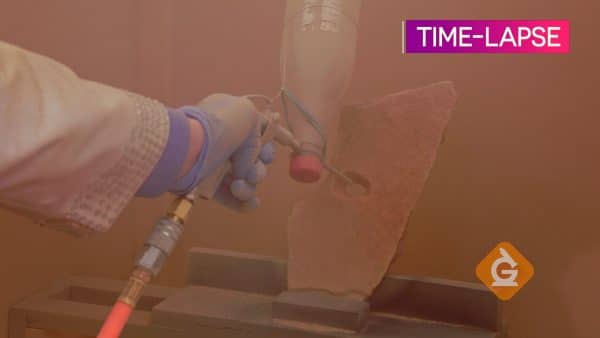
For as long as the Earth has existed, weathering has helped shape the landscape. Weathering wears away rocks and soil.
Water is often the main cause of weathering, either as rain or ice. Rainwater can easily enter cracks in rocks or sidewalks. If this happens during cold months, the water may freeze and expand in the crack. Working as a wedge, the ice splits the rock. Many times, road crews have to patch up potholes caused by weathering from ice.
Wind can also cause weathering. Over long periods of time, wind can wear away rock and carry tiny pieces of the rock to new places. This is can create amazing landscapes, such as rocks that look like mushrooms.
Sometimes living things can cause weathering. Plant roots can wedge their way in between small cracks in rocks. As the plant grows, the roots increase the size of the crack little by little. Eventually, pieces of the rocks break off and get carried away by wind or water.
Erosion moves pieces of the Earth.
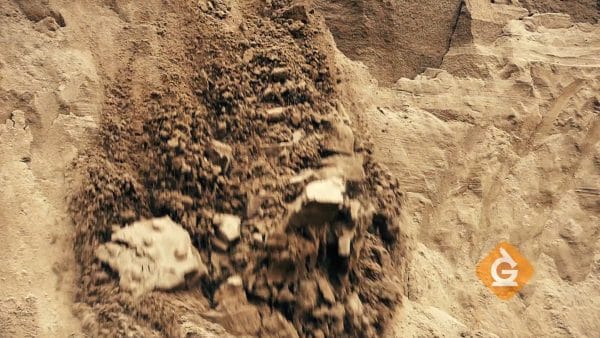
As pieces of the Earth are broken down by weathering, they are carried away in a process called erosion.
Water is a common way that pieces of the Earth are moved to a new location. Wind also contributes to erosion by blowing the particles away. Glaciers can pick up pieces of the Earth and drag them to new locations. They are slow but powerful.
Although erosion has helped shape some of the most amazing features on Earth, it can be harmful to the environment. When soil is washed away from one place to another, it can carry harmful materials like chemical, fertilizers, or pesticides. These dangerous chemicals can pollute our water supply.
Deposition is when pieces of the Earth are deposited somewhere else.
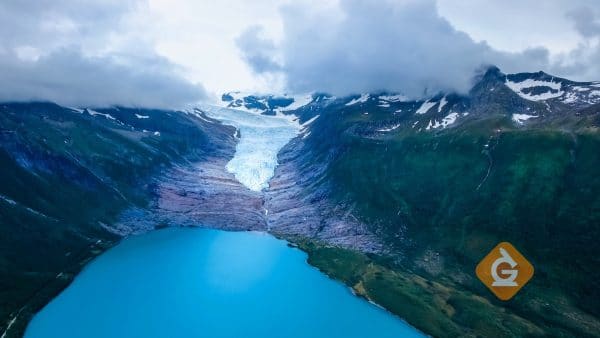
It is important to remember that when weathering happens, tiny pieces of the Earth do not disappear. They are moved through erosion, and deposited somewhere else through deposition. It could be very close, only a few feet away, or it can be many miles away such as if the tiny pieces were washed into a river.
The deposited materials can also create new landforms. For example, in Hawaii black sand from eroded lava is deposited on several beaches.
Weathering happens at different rates.
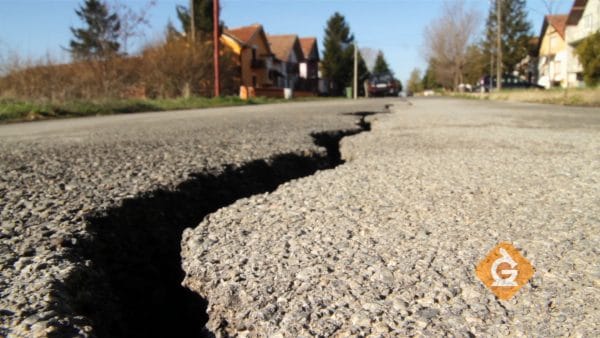
We see the effects of weathering and erosion every day. Splits in roads or sidewalks are caused by the expansion of ice, or the daily heating and cooling of the ground.
Sand on the beach is created from ocean waves pounding on rocks and eventually creating sand.
Sometimes erosion can happen very quickly like with mudslides. Mudslides are caused by moving water and gravity, and happen in only minutes.
Most weathering, however, is a slow process that happens over thousands or millions of years. The speed at which weathering and erosion take place depends on the type of material that is being worn away. Some hard rock, like granite, wears away slowly, while softer rock like limestone, wears away much more quickly.
WEATHERING AND EROSION EXAMPLES
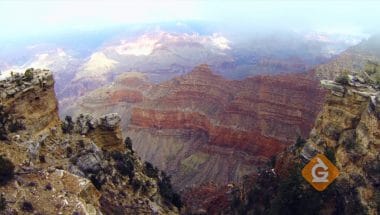
Weathering and erosion from water created the Grand Canyon.This huge canyon was carved by the flow of the Colorado River over millions of years.
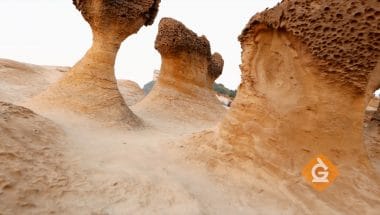
Mushroom rocks are created by wind erosion. The wind carried sand close to the ground, carving the bottom of these rocks more than the top.
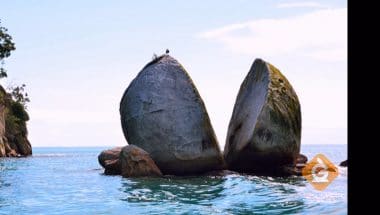
Split Apple Rock in New Zealand was caused by ice expanding and splitting rocks apart.Geologists believe that this huge boulder was split during one of the Earth's ice ages.
WEATHERING & EROSION VOCABULARY
Weathering
The process by which earth's surface is broken down into smaller pieces.
Erosion
After pieces of the Earth are broken down through weathering, those pieces are moved through erosion. It's the process of moving things from one place to another.
Deposition
After pieces of the Earth are carried by erosion they are deposited somewhere else. Deposition means to deposit things somewhere else.
Liquid Nitrogen
An extremely cold liquid made from nitrogen gas being squeezed (compressed) really hard. It is -321 degrees Celsius (-196 degrees Fahrenheit) and is used to freeze things very quickly.
Glacier
A slowly moving mass of ice formed by the buildup of snow. They are usually found on mountains or near the poles of the Earth where it is cold. Movement of glaciers can cause weathering and erosion.
Grand Canyon
A five-thousand-foot-deep canyon located in Arizona. It was carved by the Colorado River over millions of years and is one of the best examples of weathering and erosion.
Naturally occurring rocks that look like a mushroom. They can be formed when sand gets carried by wind and hits the rock. This weathers the bottom of the rock more than the top.
A large amount of mud mixed with water that slides down a mountain due to gravity. It usually causes damage and destruction.
WEATHERING & EROSION DISCUSSION QUESTIONS
How did Split Apple Rock form in New Zealand?
Split Apple Rock was formed by weathering from ice! When water gets into a small space and freezes, it expands and can crack whatever is containing it (just like the metal pipe in the video.)
How does a crack in the sidewalk form?
Izzy mentioned that cracks in the sidewalk formed because the concrete expanded and contracted over time. When the sun heated the sidewalk it caused the concrete to expand. At night the sidewalk cools and the surface contracts. Since this happened many times, the sidewalk eventually cracked. It's like bending something over and over again – eventually it breaks!
How did mushroom rocks form?
Wind carried sand particles close to the surface and they hit the bottom of the rock more than the top. Since the bottom is carved more it looks like a mushroom.
Does weathering affect different materials differently?
Sometimes weathering happens really fast while at other times it happens very slowly. The amount of time is mostly due to the properties of the rock that is experiencing weathering. For example, soft surfaces like soil will weather really fast but hard surfaces like rock take longer.
Why does deposition occur after erosion?
Deposition means that small pieces of the Earth are deposited, or end up somewhere else. In order for something to end us somewhere else it first has to be moved – that's erosion!
weathering erosion and deposition drawing
Source: https://www.generationgenius.com/weathering-erosion-and-deposition-for-kids/
Posted by: hopkinswiturpred.blogspot.com

0 Response to "weathering erosion and deposition drawing"
Post a Comment